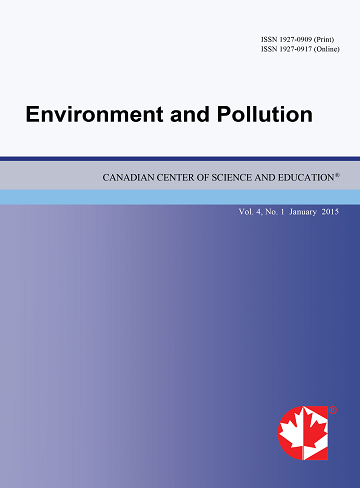Assessment of Nine Micronutrients in Jasmine 85 Rice Grown in Ghana Using Neutron Activation Analysis
- Michael Kwame Vowotor
- George Amoako
- Baah Sefa-Ntiri
- Samuel Amoah
- Samuel Sonko Sackey
- Charles Lloyd Yeboah Amuah
Abstract
The amount of micronutrients in food is a key factor that determines the health status of a person. The concentrations of nine micronutrients, Sodium (Na), Magnesium (Mg), Chlorine (Cl), Potassium (K), Calcium (Ca), Vanadium (V), Manganese (Mn), Copper (Cu) and Iodine (I), in polished Jasmine 85 rice, locally cultivated in five rice farming areas in Ghana (Afienya, Afife, Dawhenya, Ashaiman and Aveyime), were determined using Neutron Activation Analysis. The standard materials used as reference were the International Atomic Energy Agency (IAEA)-530 Tuna fish homogenate and the National Institute of Standard and Technology (NIST) USA 1566b Oyster Tissue. Recoveries of the elemental concentrations ranged from 88% to 111% of the certified values. Relative standardization method was used in the quantification of the elements. The range of concentrations measured in the rice are: 142.3-188.1 mg/kg for Na, 483.2-875.7 mg/kg for Mg, 465.6-718.0 mg/kg for Cl, 514.6-2949.0 mg/kg for K, 2303.0-2622.0 mg/kg for Ca, 0.0698-0.1925 mg/kg for V, 9.956-14.460 mg/kg for Mn, 0.8728-1.6790 mg/kg for Cu and 0.1181-0.1447 mg/kg for I. Using Hierarchical clustering analysis and Principal Component Analysis to evaluate the intensities of measured concentrations, K was established to be the most abundant, and was used to categorize two distinct clusters; Group 1 farms (Ashaiman, Afienya, and Dawhenya) and Group 2 farms (Aveyime and Afife). Group 2 farms recorded elevated intensities of micronutrients. With Pearson's correlation coefficient, some noteworthy correlations realized were between Na and K (r = 0.951), Na and V (r = 0.842) and K and V (r = 0.812). This indicated the same or similar source inputs for each pair. The calculated mean daily intake of K exceeded the mean Recommended Dietary Allowable and Adequate Intake for all Life Stage Groups. Estimated health risk associated with the consumption of rice was only present for children between the ages of 1 and 3 for Mg. The information on these nine micronutrients content of the rice from these five farming areas would be valuable in rice consumption studies to evaluate the overall availability of micronutrients to the Ghanaian populace and age groups and also in nutrition planning for analysis of nationwide rice supplies, mainly for regions and countries known to be susceptible to deficiencies of these micronutrients. The techniques espoused in this research can be used to accurately determine the concentration of micronutrients in rice and also trace the area where the rice was produced.
- Full Text:
 PDF
PDF
- DOI:10.5539/ep.v9n2p29
Journal Metrics
Index
- Academic Journals Database
- Berkeley Library
- CAB Abstracts
- CAS (American Chemical Society)
- CNKI Scholar
- COPAC
- CrossRef
- DTU Library
- Elektronische Zeitschriftenbibliothek (EZB)
- EuroPub Database
- Excellence in Research for Australia (ERA)
- Genamics JournalSeek
- Google Scholar
- Harvard Library
- Infotrieve
- Jisc Library Hub Discover
- JournalGuide
- JournalTOCs
- LOCKSS
- Max Planck Institutes
- Mir@bel
- PKP Open Archives Harvester
- Pollution Abstracts
- Publons
- Pubmed journal list
- ROAD
- Scilit
- SHERPA/RoMEO
- Standard Periodical Directory
- Stanford Libraries
- UCR Library
- Ulrich's
- UniCat
- Universe Digital Library
- UoS Library
- WorldCat
- Zeitschriften Daten Bank (ZDB)
Contact
- Albert JohnEditorial Assistant
- ep@ccsenet.org
